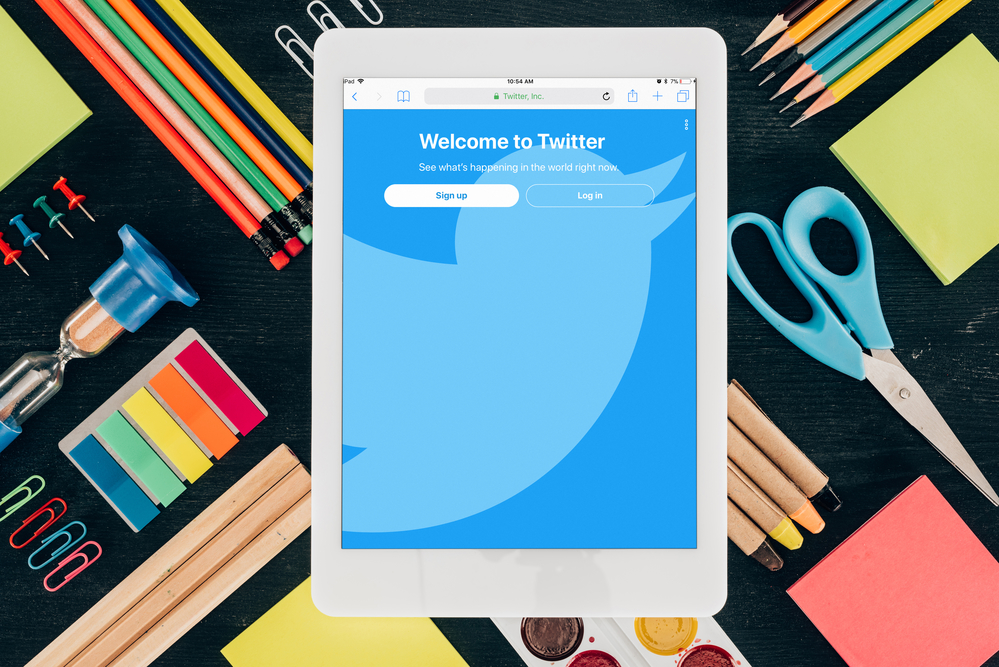When someone wants to quickly garnish the attention of followers and non-followers alike, there is one social media platform they turn to above all others: Twitter. Twitter allows for quick bursts of information that can instantly be shared and read by millions of people. News organizations rely on Twitter to share the latest insights on a developing story. Political figures publicize their thoughts to the world through it. And companies interact with consumers through tweets, comments, and likes. But what kind of content is the most popular? If a tweet represents a fishing line, what brings in the biggest fish? Here are four types of content Twitter completely loves, with proven results.
Short Tweets, Shorted Links
People want instant answers. To come by these answers, the majority of Internet users don’t read a full article or even an entire social media post. People want to take away the offered information and move on. That is what makes Twitter so unique. Due to the length requirements of Twitter, most posts that are read are read in full. It’s difficult to determine full readability as the posts appear on a Twitter feed and there’s not a current way to determine how much someone reads, but as most tweets are just a few words of length, it helps boost readership. With that said, one of the most popular forms of content on Twitter is the link included tweet. But with a link taking up valuable characters, how can a Twitter user best utilize their space while increasing user interactions? There are a few ways to go about doing this.
According to Rabbit Collective (2017), the shorter a tweet featuring a link, the more traffic it generates. In these instances, tweets of 100 characters experience a 17 percent increase in engagement over longer tweets. Despite the increase in Twitter’s allotted character length, shorter remains better. The best way to cut down on character length within a tweet is to take advantage of a link shortener service. Google offers a free link shortener at Goo.gl, which can cut down individual links of nearly 100 characters down to around 10. This way, more description can be included while remaining under (or around) the desired limit of 100 characters.
According to Fast Company, the length of a tweet from short to long all impact how frequently a tweet is going to be shared. Tweets between 71 and 100 characters are retweeted 59 percent of the time (regardless of account or who is tweeting). Tweets larger than 101 characters are retweeted 51 percent of the time, showing a slight but noticeable drop-off. These numbers decline further for small tweets between 41 and 70 characters. These posts are retweeted just 39 percent of the time. The shortest posts between zero and 40 characters see only 17 percent retweets. Other factors are at play with regards to how often a tweet is engaged, including the time of the day, the time of the week and the frequency of the poster, but in terms of the length of a tweet, the most popular content hovers right around 100 characters that include some sort of a URL link (these are often blog posts, news stories or other helpful information an account user might be interested in checking out either right then or later).
(Source)
Beyond shortening links, a link’s URL placement within a tweet also plays a bit part in the overall engagement. According to Poscron (2018), tweets with a link in the middle of the text experiences a 26 percent increase in activity. Tweets beginning with a link are often seen as an advertisement, while a user may not notice a link at the bottom of the tweet.
Picture Tweets
There is a reason why the word media is included when describing “social media” accounts. It is because media based content makes up an important part of the service. The same holds true with regards to Twitter. However, unlike other platforms, pictures perform substantially better than videos. In fact, according to Rabbit Collective (2017), images are 128 percent more likely to retweet images over videos. Now, videos do receive 49 percent more likes than images, so diversifying account posts is important, but in terms of reaching a larger audience, pictures are the way to go.
(Source)
It isn’t just as simple as posting a picture to Twitter though. The content within the visual is very important. According to Quicksprout, humor tweets receive far more retweets than any other format. In fact, 62 percent of all retweets are humor based. The next largest category is food tweets at nine percent, travel at seven percent, and “other” hits 22 percent. People want to laugh and they want to share the humor with other friends and followers, which is why offering a funny visual can go a long way in expanding viewership.
Twitter now allows a user to tag up to 10 other users when posting visuals without it counting toward the final character count. Taking advantage of these benefits is highly desirable as it instantly puts the picture in front of these users, who may have missed the picture post depending on their Twitter usage schedule. It also increases the potential for retweets and shares by these tagged individuals (all while exposing the visuals to their own followers).
Not all pictures are great though. In recent years, memes have become growingly popular. Memes make up the smallest percentage of visual tweets, according to Quicksprout, and should, in reality, be used on other accounts such as Facebook. When tweeting for business or to grow a brand, it is best to avoid posting memes to Twitter as it doesn’t bring with it the kind of conversions a user might expect.
Quotes
For anyone who wants to gain attention on Twitter, one of the best ways is to take advantage of the wise words passed down from someone else. In other words: post quotes. Quotes can offer inspirational sayings and ways of life that instantly connect with users. Not everyone is a word’s smith and knows how to accurately and elegantly articulate his or her own, personal feelings. This is where posting a quote comes in. The quote may perfectly summarize how they feel, or it may simply reflect a core belief they have. Quotes are some of the most retweeted posts on the social media platform, which is why using these kinds of posts and integrating it into a social media campaign can prove especially beneficial for anyone looking to grow their influence and connectivity numbers.
According to Quicksprout, tweets featuring a quote receive 847 percent more retweets than question-based posts. Additionally, posting quotes can help increase the number of followers as well. The same study found that those who posted quotes had 43 percent more followers than those who didn’t post quotes. Including a quote, according to Buffer App (2016) is actually the third most common way to receive a retweet and additional user engagement. While 35 percent of retweets go in the direction of a photo URL and 28 percent go to a video URL, 19 percent of retweets are based on a quote. Based off of this information, a quote post is more likely to receive a repost than a hashtag post.
(Source)
This isn’t to say question-based posts should be avoided. It is fine to mix these posts in as tweets with questions to receive more feedback. Questions experience a 1050 percent increase in replies over quotes. In this manner, it comes down to what a social media account holder is looking to accomplish with the posts. Do they want to expand outward and increase his or her following, or does the account holder want to start a conversation and engage with users? Thankfully, a user does not need to pick and choose and the best practices for a business account is to use both quotes and questions, with more based on the eventual goal of the company.
The Hashtag Post
The hashtag symbol has been around for decades (or centuries, for those who want to consider it a sharp symbol for sheet music). Originally used as an added symbol on touchtone phones, the hashtag first entered the social media world back in 2009 when Twitter started to use it as a way to socially connect and bookmark a specific subject. Twitter did not have the resources to comb through and identify keywords within every real-time post in order to connect other users, so a hashtag made it possible for a user to instantly identify the keywords of a post. The hashtag has, in less than a decade, become a revolutionary way of connecting users on an individual subject. Hashtag based content is extremely important for any user who wants to grow his or her brand and reach new customers and followers. As Postcron (2018) points out, Twitter posts that include hashtags are 33 percent more likely to be retweeted than those without a hashtag (due to the additional number of Twitter users the hashtag connects a poster too). However, while Instagram allows an almost limitless number of hashtags, Twitter users are still limited to their character limit, which means picking and choosing the right hashtags is important. Beyond this though, it plays a pivotal role in how popular a tweet is.
One of the biggest mistakes a Twitter user makes is posting as many hashtags as they have room. After all, this connects the post with as many different subjects as possible. While this may seem logical, it doesn’t result in the most interactions. According to Postcron (2018), it’s more beneficial to post a single hashtag than two hashtags. In this instance, tweets with a single hashtag receive a 69 percent increase in retweets than posts with two hashtags. As the research suggests, posts with multiple tags appear more and more like a marketing post more than anything else and Twitter followers are less likely to retweet a post if they believe it’s a scam or attempting to sell something. The individual hashtag keeps it feeling more organic.
(Source)
Sprout Social (2018) demonstrates just how important it is to limit the number of hashtags within a single social media post. It looked at top companies, brands, and influencers on social media and averaged out the frequency of which a post includes tags and how many tags it uses. As the Postcron article indicated, using one hashtag is by far the more popular for top brands, followed by two hashtags (for every 1,700 posts using a single hashtag, 1,200 used two). The next most common is three hashtags. However, posts featuring zero hashtags are more common than those with four hashtags. The numbers then go down from there, with all subsequent posts seeing less and less traffic, retweets and interaction as more hashtags are included. This demonstrates in the world of hashtags, fewer is almost always better.
As the same Postcron information points out though, the length of a hashtag also plays a surprising role in the frequency of a retweet. If an individual hashtag has 11 or more characters, it becomes 117 percent more likely to receive a retweet than hashtags between six and 10 letters. Coming up with longer hashtags may prove difficult for some users, which is why service providers such as RiteTag offer browser extensions to help create longer tags that may prove the most beneficial for connecting with other users.
In Conclusion
Twitter remains a social media platform unlike any other. With its ability to send quick bursts of information and publish content for the world to discover, it’s only a matter of understanding how to use it and focusing a company’s Twitter account onto what works. Twitter users will discover what works best for them and their followers may differ slightly from what works for others. However, these four types of published Twitter content offers an excellent starting point, while offering plenty of room to grow, test and evolve.








